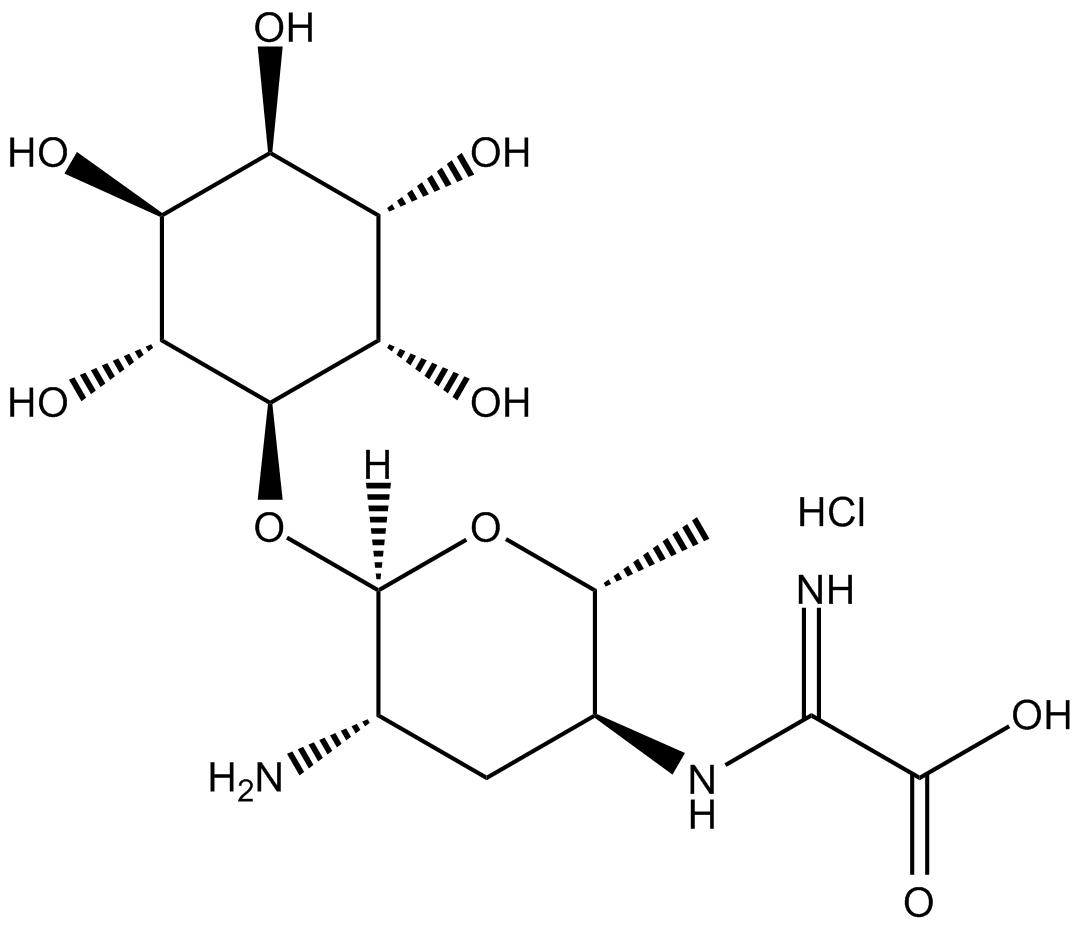Kasugamycin (hydrochloride) |
| Catalog No.GC12556 |
La kasugamicina (clorhidrato) (clorhidrato de Ksg) es un antibiótico que se une a los ribosomas 30S y 70S pero no a las subunidades 50S aisladas.
Products are for research use only. Not for human use. We do not sell to patients.

Cas No.: 19408-46-9
Sample solution is provided at 25 µL, 10mM.
Kasugamycin is an aminoglycosidic antibiotic.
Aminoglycoside, a medicinal and bacteriologic category of traditional Gram-negative antibacterial therapeutic agent, inhibits protein synthesis and contains as a portion of the molecule an amino-modified glycoside.
In vitro: Kasugamycin could inhibit protein synthesis by interacting with the 30S ribosomal subunit. The mechanism of inhibition of protein synthesis appeared to be different from that of other aminoglycosides, such as kanamycin, streptomycin, neomycin, gentamicin. The initiation complex formation on 30S ribosomes could be inhibited by kasugamycin but not by streptomycin, kanamycin or gentamicin, though the binding of fMet-tRNA to 70S ribosomes was inhibited by both streptomycin and by kasugamycin. [1].
In vivo: Five groups, each consisting of five guinea pigs, were infected with Shibaura strain; two groups were treated by injection with kasugamycin. All animals treated with 1 mcg/g were killed showing an average survival period of 7.4 days, which was close to the average survival period of 6.2 days in the control group; while all animals treated with 5 mcg/g survived. The other two groups were treated with kasugamycin from the icteric stage to the 10th day after infection. Two animals of the 5 mcg/g group survived, showing no leptospira in the kidney; the other three died in an average of 7.7 days. Three animals of the 10 mcg/g group survived; while the other two animals died in 6.5 days on an average . The total amounts of kasugamycin administered to the infected guinea pigs from the febrile stage were 10.8 mg (the 1 mcg/g group) and 54.0 mg (the 5 mcg/g group) [2].
Clinical trial: So far, no clinical study has been conducted.
References:
[1] Okuyama, A. ,Machiyama, N.,Kinoshita, T., et al. Inhibition by kasugamycin of initiation complex formation on 30S ribosomes. Biochemical and Biophysical Research Communications 43(1), 196-199 (1971).
[2] Kitaoka M, Mori M, Arimitsu Y. In vitro and in vivo effects of kasugamycin on Leptospira icterohaemorrhagiae. Jpn J Med Sci Biol. 1975 Oct-Dec;28(5-6):285-90.
Average Rating: 5 (Based on Reviews and 31 reference(s) in Google Scholar.)
GLPBIO products are for RESEARCH USE ONLY. Please make sure your review or question is research based.
Required fields are marked with *




















